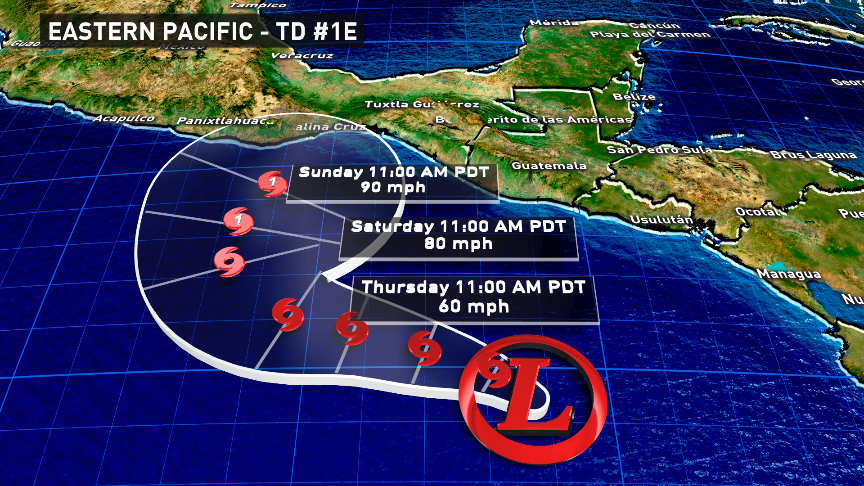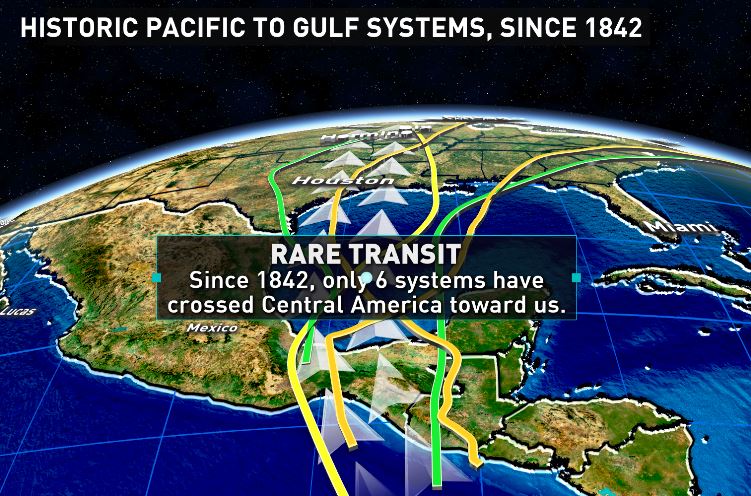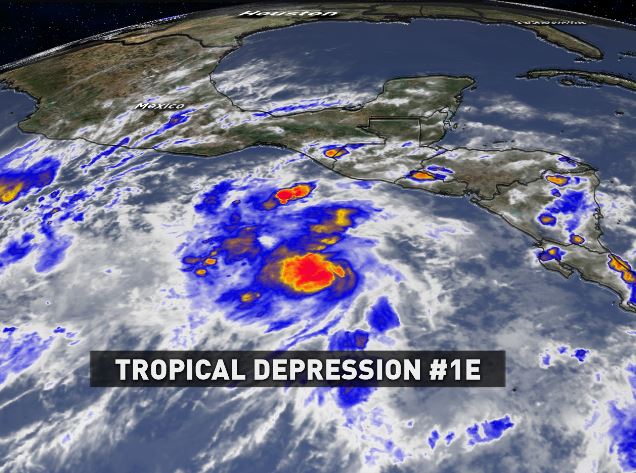While the eastern Pacific hurricane season doesn't officially start until next week -- May 15th -- for all intents and purposes, it started early! Today, the first tropical storm ("Adrian") formed there and it's heading north. Now many are asking me if this future Pacific hurricane will cross the thin landmass isthmus of Central America and enter the Gulf of Mexico, threatening us. Well, will it? The best way to answer that is to look at medium range forecast models, then compare with documented history and finally consider the time of year.


One final element to consider is time-of-year: Out of those 6 systems, 5 of them made this transition into the Gulf very late in the hurricane season -- September and October. That's when steering currents changed and cold fronts are more likely to drag them north. (Only one system made the crossing in June, back in 1965, due to an extremely rare setup.) Considering it's still early-May, another eye brow is raised at the unlikely chance it'll cross into the Gulf.
On the flip side, it's also rare for an Atlantic-born tropical system to cross into the Pacific. There have only been 12 since 1876, which means we're talking less than 1%. The most recent was actually last year: Hurricane Otto.
So, the answer to the question, "Will future eastern-pacific Hurricane Adrian move into the Gulf?" Almost certainly, "no."



